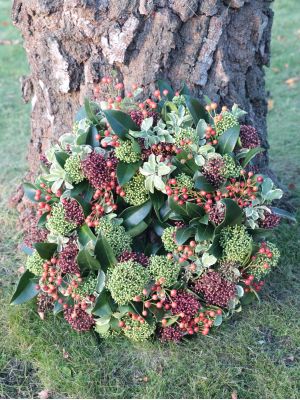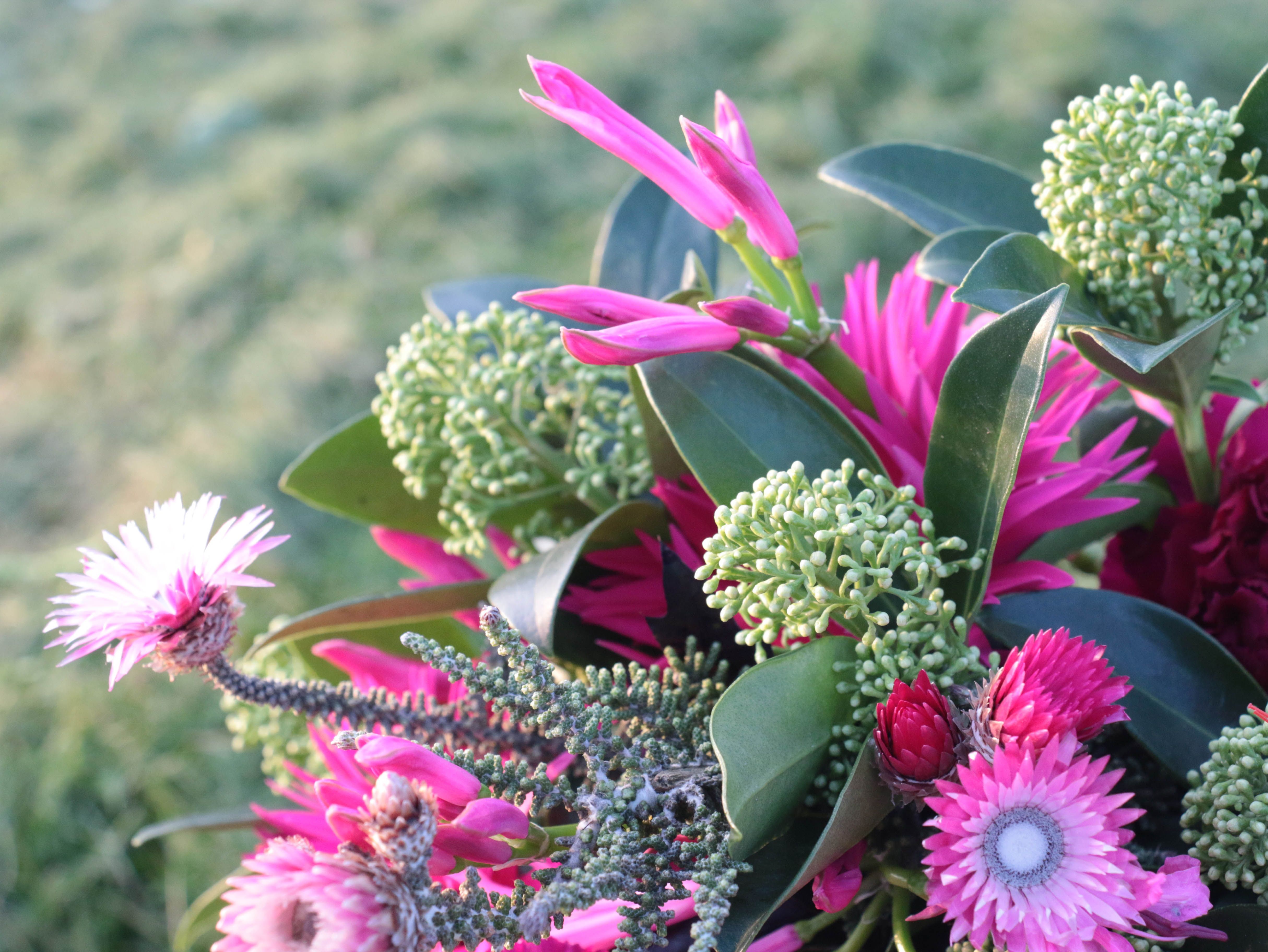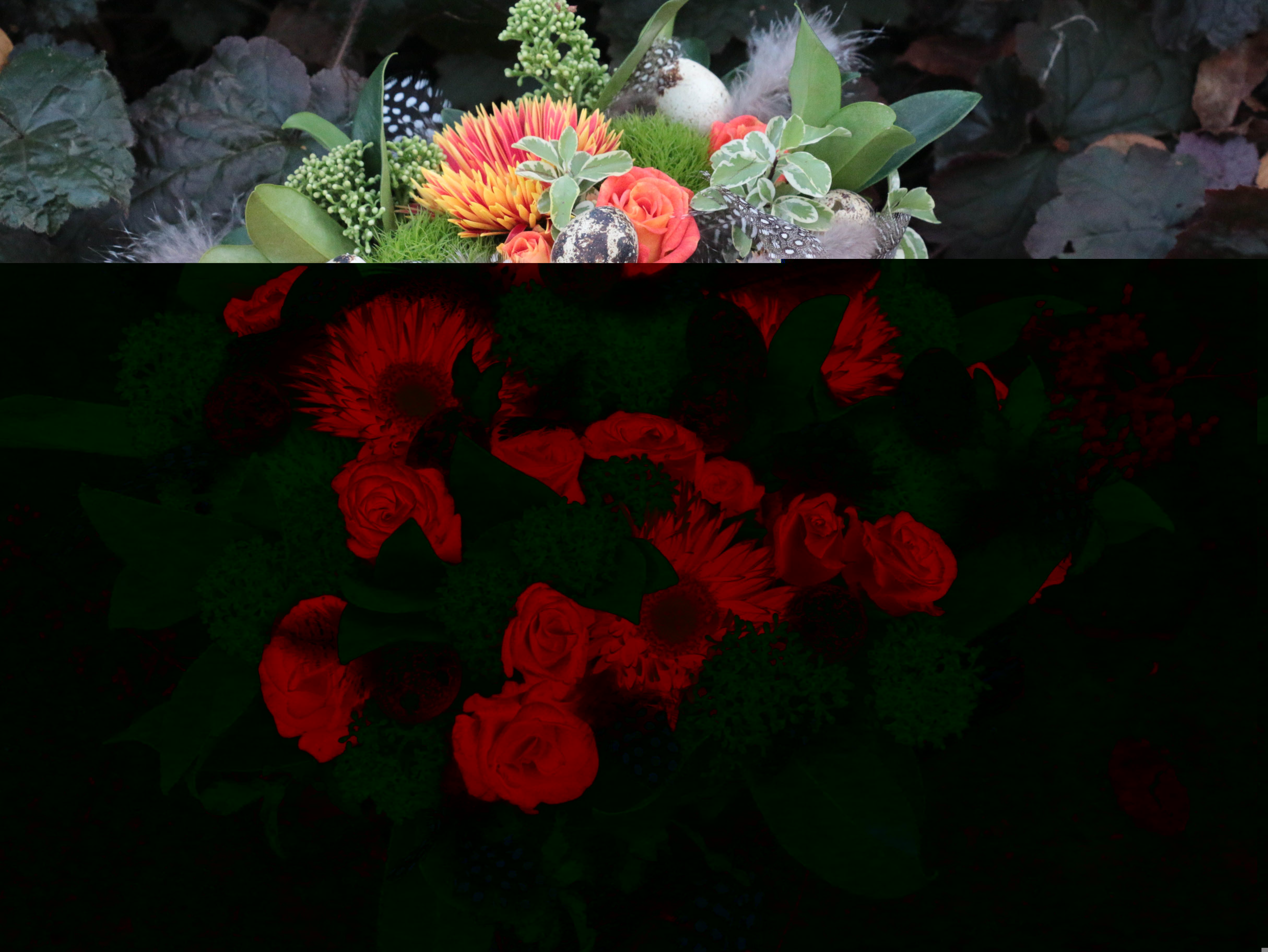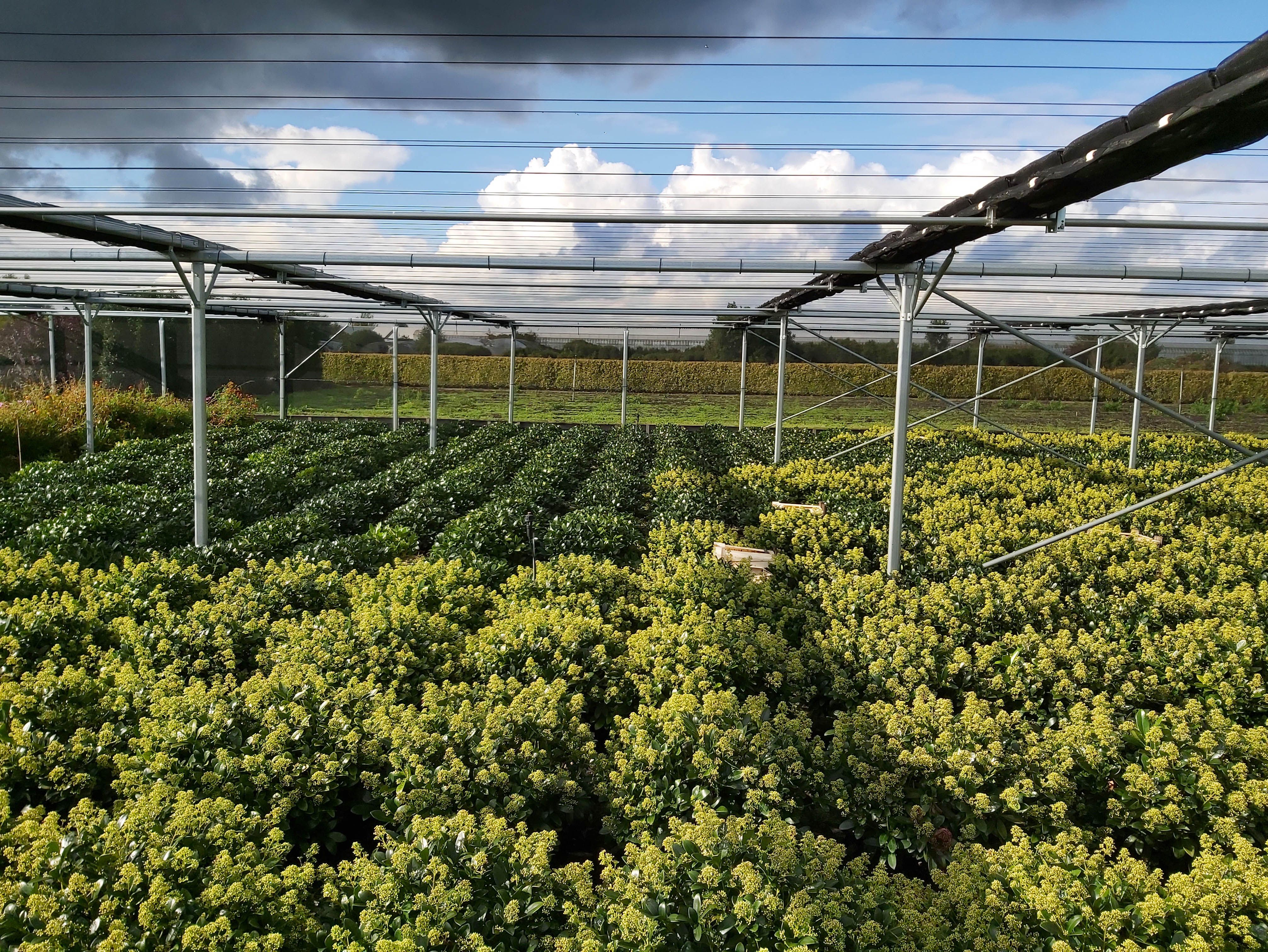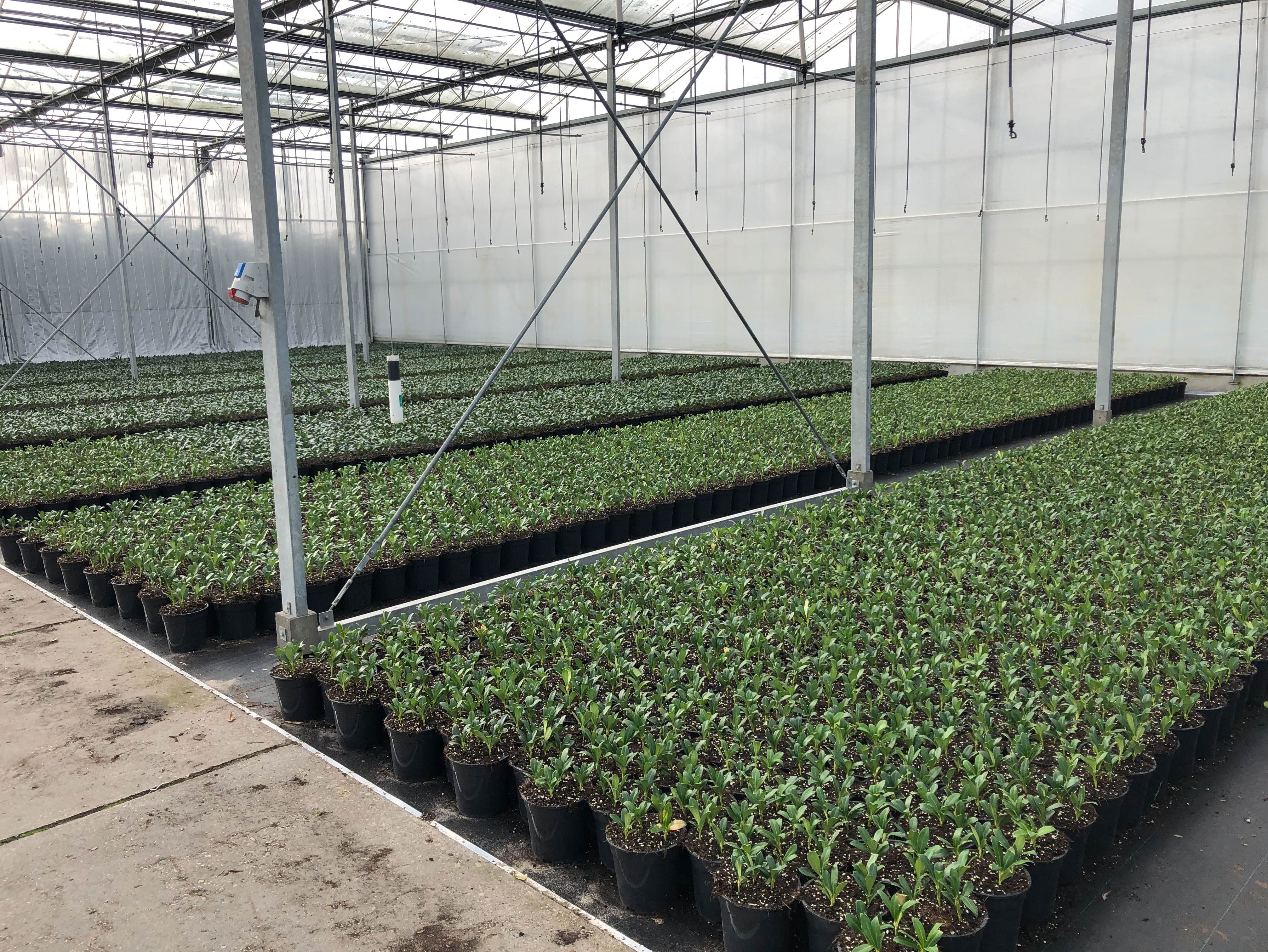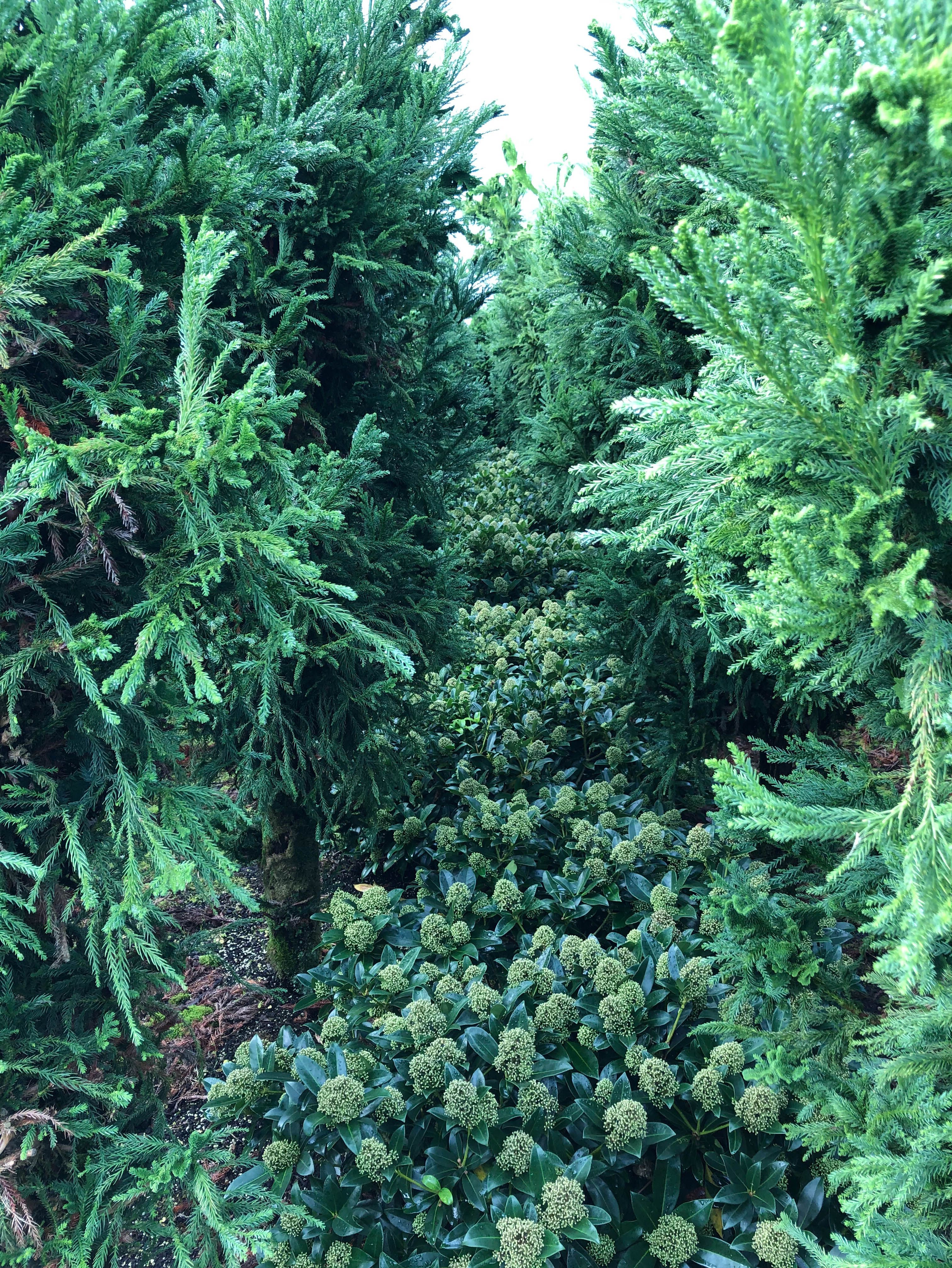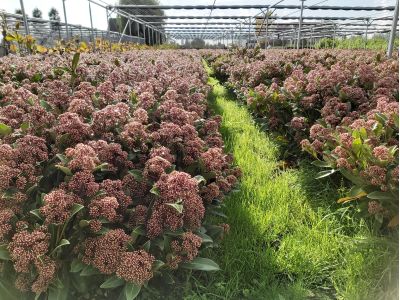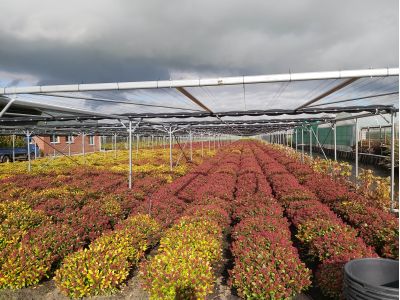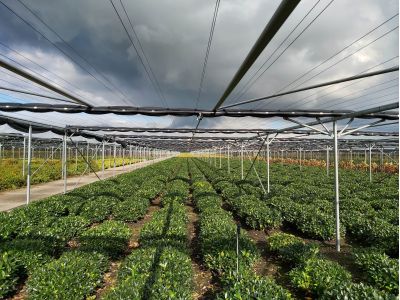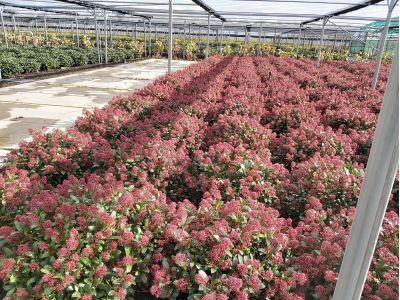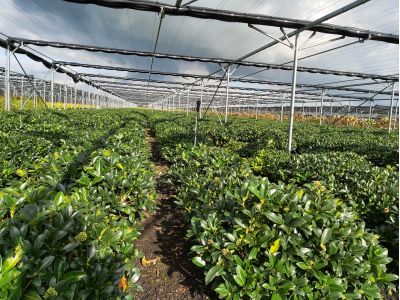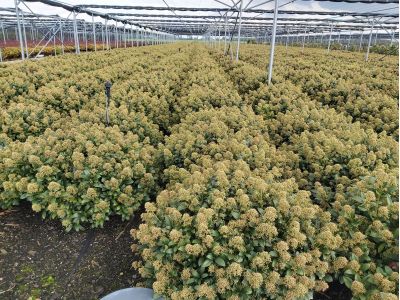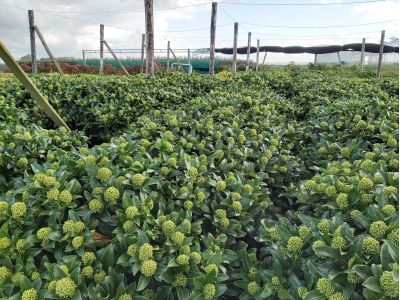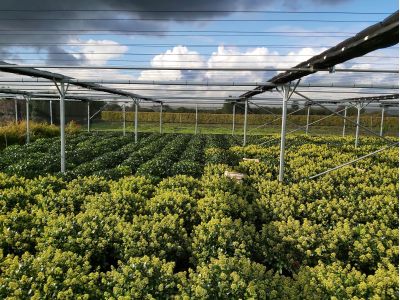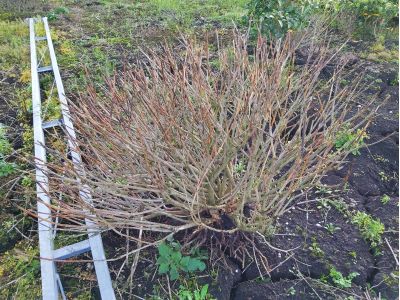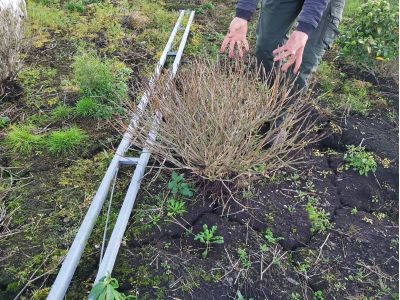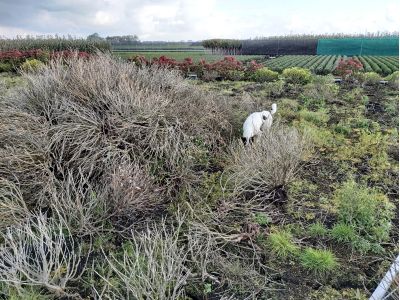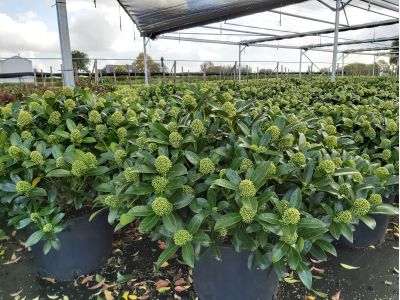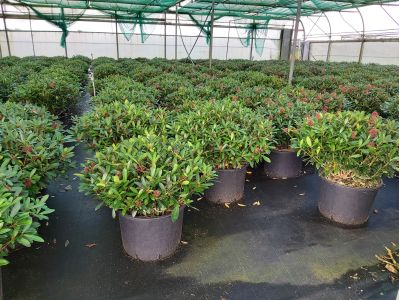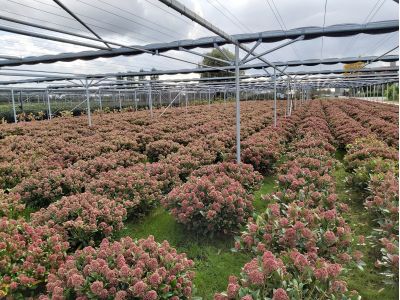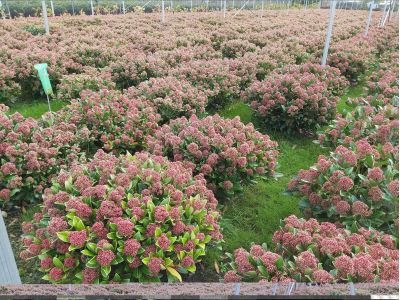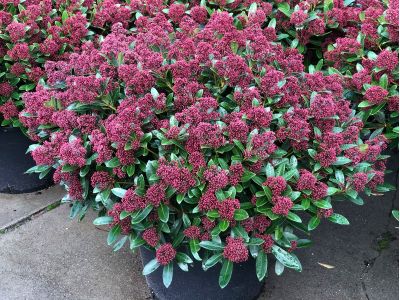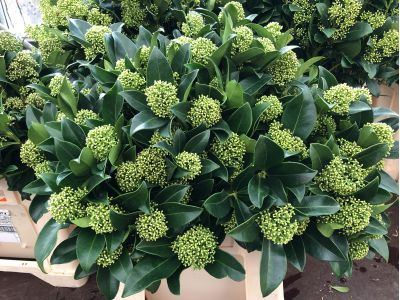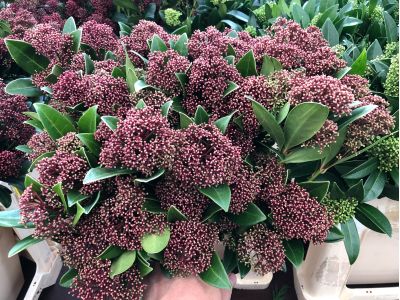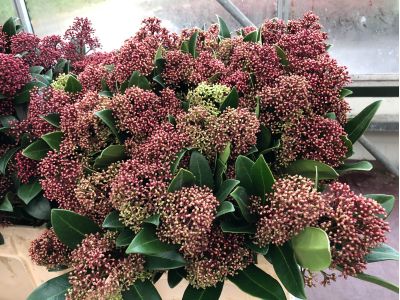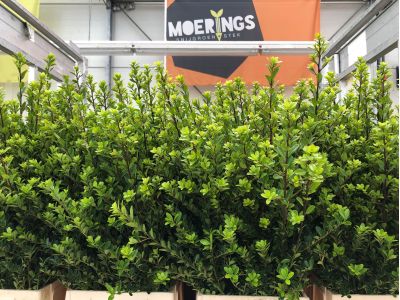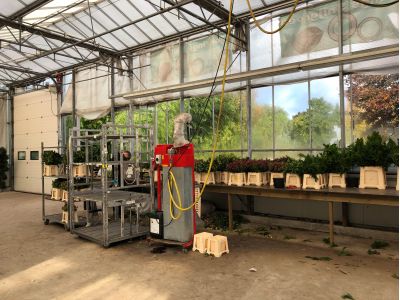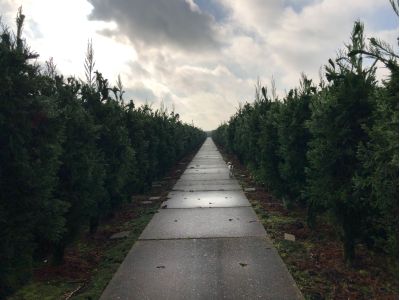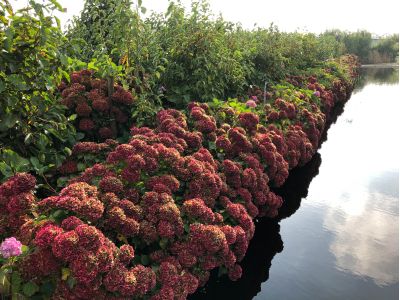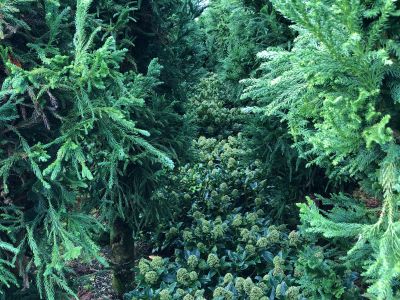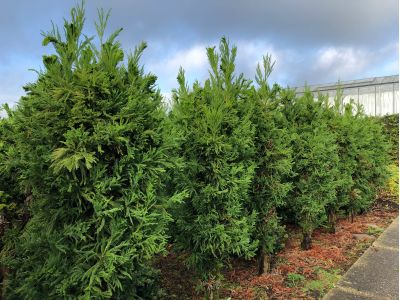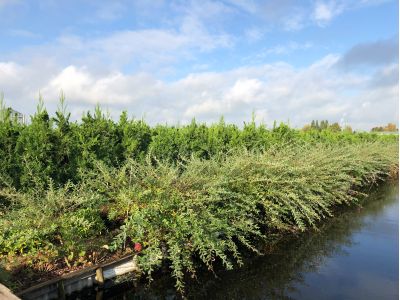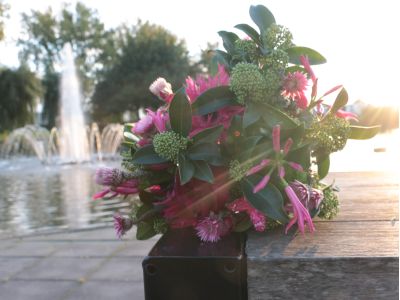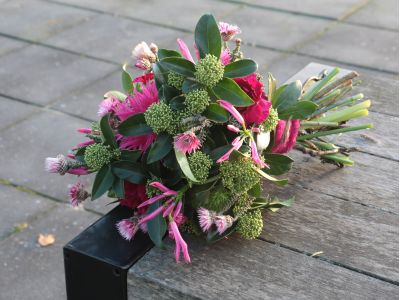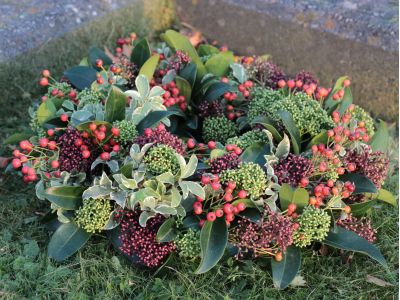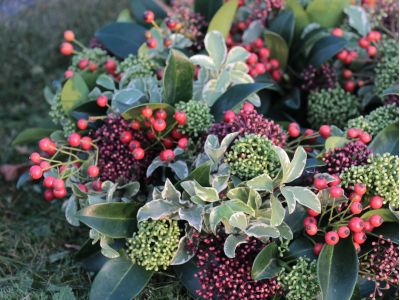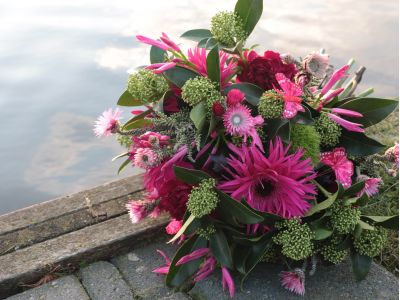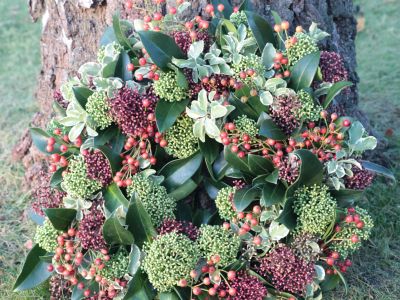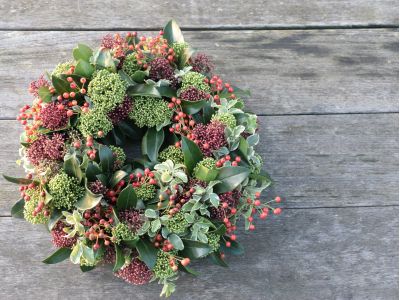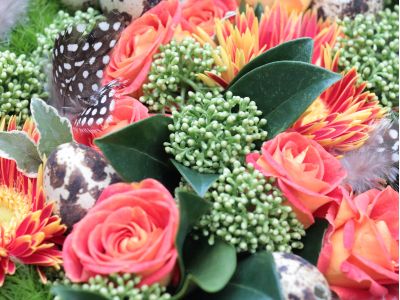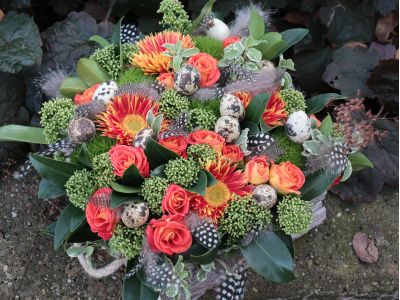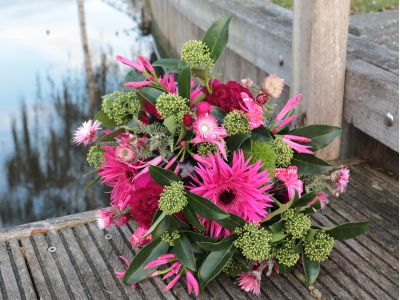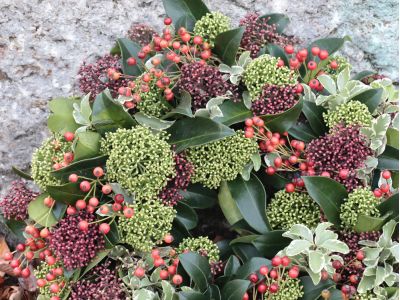Skimmia japonica White Globe
In the spotlights
Cut-Skimmia is no longer solely used as Christmas green. Over the years, more and more varieties and colors have come on the market. In addition, a larger diversity in lengths is being produced, the product is becoming more versatile and therefore offers more and more possibilities. As a result, it is increasingly used in more than just the Christmas season. Frank Moerings, from Moerings Snijgroen nursery, tells us more about Skimmia and its cultivation.
Breeder's blood
For many members of Franks family, the breeder's blood runs through their veins. Leo Moerings, Frank's father, founded the company. His cultivation consisted largely of Christmas greens. One of the species that he grew was Cryptomeria; these beautiful trees are still in the garden today.
In the past, they let grass grow between the Cryptomerias. But, in order to make better use of the soil, a small corner of the garden was used in an attempt to cultivate Skimmia between these erratic trees.
Skimmia does not like wet soil and prefers a shadowy sport. The Cryptomeria trees took away much of the water and provided the necessary shade for the Skimmias. It turned out to be a successful combination.
A lot of Christmas greens nowadays come from Scandinavia, and because of this competition only Christmas greens would no longer be profitable for the nursery. The introduction of cut Skimmia was therefore very convenient.
Ten years ago Frank started to produce cuttings of the Skimmia, which means that he now not only supplies cut Skimmia, but also various types of cuttings.
In the spotlights
In the spotlights this week the Skimmia japonica "White Globe", a beautiful white Skimmia that emerged from the Skimmia "Fragrant Cloud", which is slightly copper-colored.
The "White Globe" is a special species, according to Frank. She has nice compact fruit and nice dark leaves. The stems are somewhat woody, making them very suitable for use in floral arrangements and oasis.
This Skimmia therefore fits very well in modern table pieces at for instance a luxury dinner, decoration for a wedding, small table arrangements, Christmas pieces, but also in cheerful spring pieces. The Skimmia is a very strong product; you can easily use it for two or three weeks, especially when kept in cold storage.
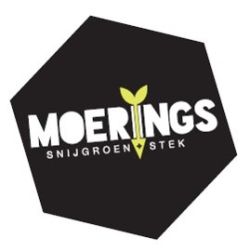
The Cultivation
We were surprised when Frank said that the Skimmia is a product that is not easy to grow. It appears to be such a strong plant. "It is," he says, laughing, "but in the right circumstances." The Skimmia does not like extremes and considering the Dutch weather, it is quite a challenge!
Lots of water
The Skimmia is by no means a sun worshiper, but she also doesn't like too much water. And allthough the Cryptomerias take most of the water, not every part of the garden is dry enough. If too much water remains, the Skimmi roots get in trouble and the leaves turn yellow, making them useless for cutting.
Some growers have therefore chosen to grow Skimmia in pots, instead of in the open ground. In this way it is much easier to control the water level. For the cut Skimmia this seems the ideal solution, but Frank also grows many Skimmia varieties for the production of cuttings. The mother plants from which these cuttings are cut receive more power in solid soil, so they can branch better.
Shadow roofs
Frank has a second garden, where he only grows Skimmias. In this garden Frank uses shadow roofs to keep the Skimmias out of the sun. This is fully automated, so he can make optimum use of the necessary amount of light and shade.
Grass
The most work in Skimmia cultivation is removing the flowers in the first year. This is necessary so the plant can produce beautifully branched branches the following year. This is all done by hand and it is extremely time consuming.
In addition to topping, keeping the soil clean by weeding is a lot of work. Frank now has a small trial piece in his garden where he grows grass among the Skimmias. He only needs to mow the grass; the grass prevents other unwanted plants from growing. As a result, fewer chemicals are needed and that in turn benefits soil life and the environment. Frank hopes that the grass will also absorb the excess water. Naturally, there is also a slight disadvantage to using grass. The grass can’t be allowed to grow too high to prevent the cotyledons of the grass from ending up in the skimmia.
The biggest enemies of the crop are sapwood and the ‘Carnation leaf roller’. The latter is a small type of moth that lays eggs on the Skimia leaves. The caterpillars of this moth eat the leaf, rendering the branches useless. If this is not determined and prevented on time and the caterpillars end up in the Skimmia’s flower later on in the season, it will kill the plant.
This butterfly is always closely monitored, and as soon as one is spotted, immediate action is taken. If a cycle is missed, it would really create a big problem according to Frank.
Mission
Ten years ago, Frank wanted to become one of the larger producers. According to him, this worked out well. He now has a number of beautiful, patented varieties. Skimmia is a product that really makes him happy; it is a sought-after product that makes him proud!
His next mission now is to grow top quality pot plants for the cut trade, in addition to the cutting production and cut branches. His biggest challenge; growing Skimmias in the open soil as long as possible.
FloraPodium, 31 October 2019






